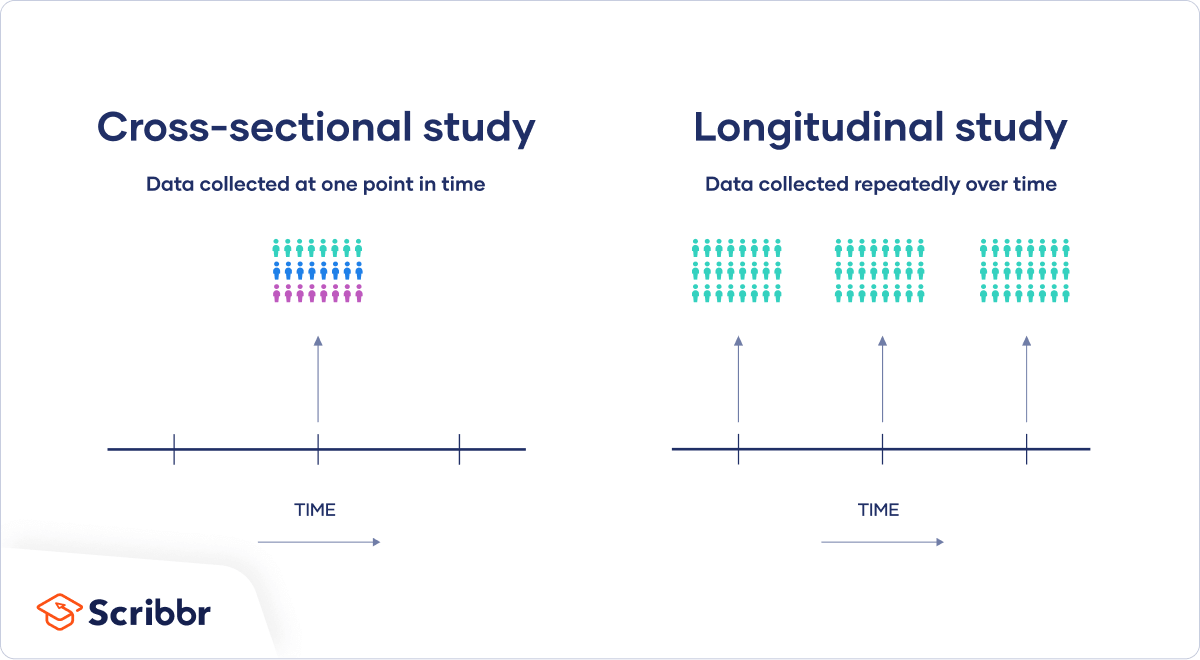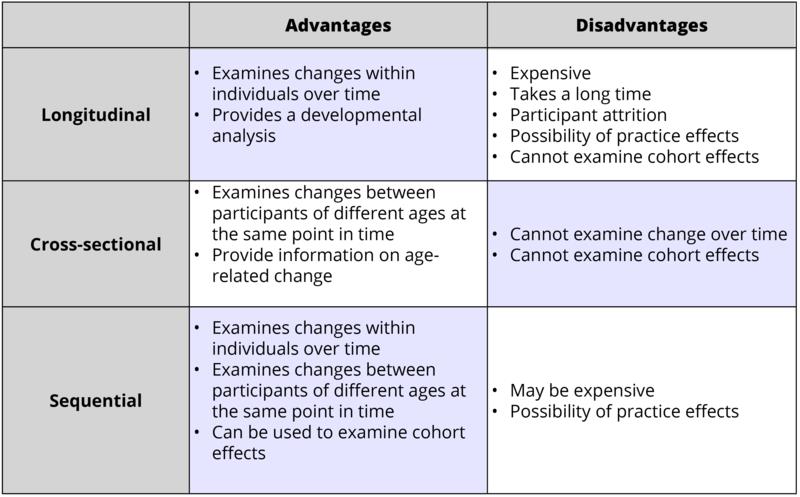The participants in this type of study are selected based on particular variables of interest. These studies are also prone to certain biases.
Bernice is planning to conduct a cross-sectional study for her dissertation.

. A disadvantage of cross-sectional research is that A it is more inefficient and inconvenient than longitudinal research. It is only effective when it represents the entire population. For example we wish to study the relation between diet and exercise and being overweightobese.
Study 2 is not a cross-sectional study. C it can be threatened by practice effects and participant dropout. 10 For example in a zoo reproduction is found to be more commonly impaired in animals with stereotypies.
Question 3 5 out of 5 points Aadit is in his early teens and is. Which of the following describes a major limitation of cross-sectional research. List of the Disadvantages of Cross-Sectional Studies.
Additional variables may affect the relationship between the variables of interest but not affect those variables themselves. This variable remains constant throughout the cross-sectional study. Moreover if the cross-sectional study is pure quantitative from my point of view follow-up qualitative research should follow to avoid the limitations and.
Multiple Choice In a cross-sectional study that compares IQ scores the difference in IQ scores of 25-year-olds and 45-year-olds is due to the 45-year-olds having taken the same test at. To investigate cause and effect you need to do a longitudinal study or an experimental study. Cross-sectional studies are observational studies that analyze data from a population at a single point in time.
The setting was a primary health centre catchment area in Goa India. The primary outcome was reporting of fatigue for at least six months. This limitation stems from the tools used for data gathering either by the researcher himself or by hospital or census bureau employees.
Which of the following is a limitation that she and her advisor discuss before she begins to collect her data. Question 2 5 out of 5 points Which of the following best describes a life stage as proposed by the ancient Greek philosopher Solon. Limitations of a Cross-sectional Study.
The timing of the cross-sectional snapshot may be unrepresentative of behavior of the group as a whole. Since cross-sectional studies only study a single moment in time they cannot be used to analyze behavior over a period of time or establish long-term trends. Question 22 2 pts Which of the following is not a limitation of cross-sectional studies.
Cross-sectional studies are often used in developmental psychology but this method is also used in many other areas including social science and education. B it does not provide evidence about change at the individual level. Unlike other types of observational studies cross-sectional studies do not follow individuals up over time.
Cross-sectional studies cannot establish a cause-and-effect relationship or analyze behavior over a period of time. A cross sectional study design was used to investigate the extent of chronic fatigue and the associated psychosocial exposures in a developing country. With a cross-sectional study it is impossible to determine whether the inability to.
List of the Disadvantages of a Cross-Sectional Study 1. A correctly structured cross-sectional study must be representative of an entire demographic for it to provide useful information. The first is that it only provides a static description of the research.
Study 1 is not a cross-sectional study. Also it takes equally long periods to gather results before the patterns can even start to be made. This is a prospective study following the growth rate of trees over time.
The data collected in a cross-sectional study involves subjects or participants who are similar in all variables except the one which is under review. Time is definitely a huge disadvantage to any longitudinal study as it typically takes a substantial amount of time to collect all the data that is required. O chronology cannot be estimated obias from low response rates difficulties with sample recruitment extremely long and time consuming Question 23 2 pts A research article entitled Marijuana use in American Indian reservation communities.
A cross-sectional study involves looking at data from a population at one specific point in time. Limitations of cross-sectional studies 2 1 Not useful for studying rare exposuresoutcomes as have too few people to make estimate prevalence 2 Cant assess causation as both outcome and exposure are measured at a single point in time. Since this is a 1-time measurement of exposure and outcome it is difficult to derive causal relationships from cross-sectional analysis.
This is unlike a longitudinal study where variables can change throughout the research. Why cross sectional research design. The benefit of a cross-sectional study design is that it allows researchers to compare many different variables at the same timeWe could for example look at age gender income and educational level in relation to walking and cholesterol levels with little or no additional cost.
They are often used to measure the prevalence of health outcomes understand determinants of health and describe features of a population. If no such representation exists then the findings from the research will not have validity. See full answer below.
Such observations are often lost in cross-sectional studies. They risk gathering data that is. There at the very least two limitations of a cross-sectional study.
Data on the primary. Participants were women aged 18-50 years. It requires the entire population to be studied to create useful data.
Proper cross-sectional studies must be representative of an entire population being studied. The primary limitation of cross-sectional studies is that the temporal link between the outcome and the exposure cannot be determined because both are examined at the same time.

Turaskills Shares The Design Analysis Strengths And Limitations Of Crosssectional Study Clinicalstudydesi Cross Sectional Study Analysis How To Plan



0 Comments